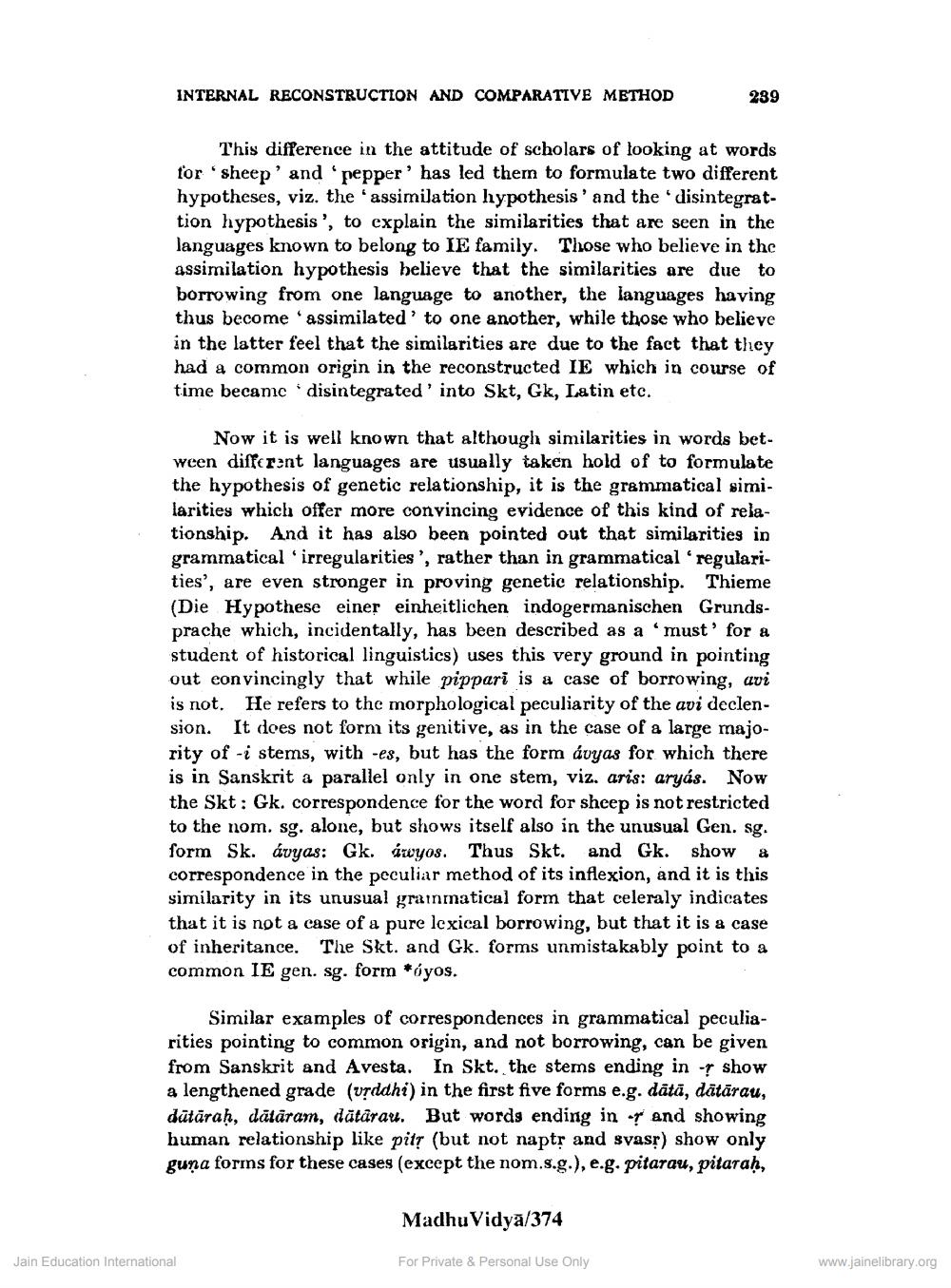________________
INTERNAL RECONSTRUCTION AND COMPARATIVE METHOD
239
This difference in the attitude of scholars of looking at words for 'sheep' and 'pepper' has led them to formulate two different hypotheses, viz. the 'assimilation hypothesis and the disintegrattion hypothesis', to explain the similarities that are seen in the languages known to belong to IE family. Those who believe in the assimilation hypothesis believe that the similarities are due to borrowing from one language to another, the languages having thus become assimilated' to one another, while those who believe in the latter feel that the similarities are due to the fact that they had a common origin in the reconstructed IE which in course of time becamc disintegrated into Skt, Gk, Latin etc.
Now it is well known that although similarities in words between diffcrent languages are usually taken hold of to formulate the hypothesis of genetic relationship, it is the grammatical similarities which offer more convincing evidence of this kind of relationship. And it has also been pointed out that similarities in grammatical 'irregularities', rather than in grammatical 'regulari. ties', are even stronger in proving genetic relationship. Thieme (Die Hypothese einer einheitlichen indogermanischen Grundsprache which, incidentally, has been described as a 'must' for a student of historical linguistics) uses this very ground in pointing out convincingly that while pippari is a case of borrowing, avi is not. He refers to the morphological peculiarity of the avi declension. It does not form its genitive, as in the case of a large majority of -i stems, with -es, but has the form ávyas for which there is in Sanskrit a parallel only in one stem, viz. aris: aryás. Now the Skt: Gk. correspondence for the word for sheep is not restricted to the nom. sg. alone, but shows itself also in the unusual Gen. sg. form Sk. ávyas: Gk. áwyos. Thus Skt. and Gk. show a correspondence in the peculiar method of its inflexion, and it is this similarity in its unusual grainmatical form that celeraly indicates that it is not a case of a pure lexical borrowing, but that it is a case of inheritance. The Skt. and Gk. forms unmistakably point to a common IE gen. sg. form *dyos.
Similar examples of correspondences in grammatical peculiarities pointing to common origin, and not borrowing, can be given from Sanskrit and Avesta. In Skt. the stems ending in -? show a lengthened grade (vrddhi) in the first five forms e.g. dātā, dātārau, dütāraḥ, dātāram, dātärau. But words ending in and showing human relationship like pit? (but not naptr and svasr) show only guna forins for these cases (except the nom.s.g.), e.g. pitarau, pitaraḥ,
Madhu Vidyā/374
Jain Education International
For Private & Personal Use Only
www.jainelibrary.org




